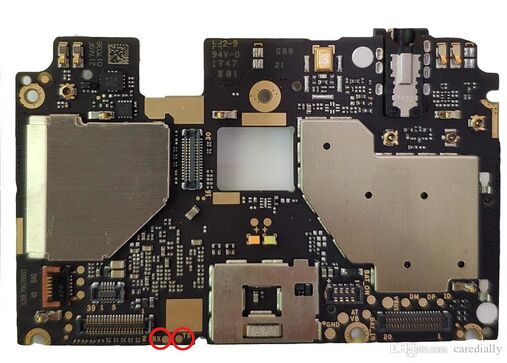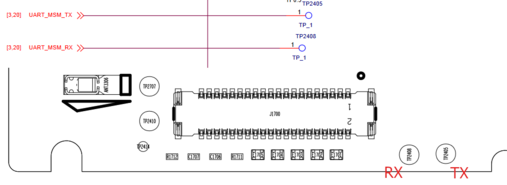Xiaomi Redmi 5 Plus (xiaomi-vince)
Appearance
| This device is supported as part of a generic port. Refer to Generic MSM8953 (qcom-msm8953) for installation instructions and more information. |
 Xiaomi Redmi 5 Plus | |
| Manufacturer | Xiaomi |
|---|---|
| Name | Redmi 5 Plus |
| Codename | xiaomi-vince |
| Released | 2017 |
| Type | handset |
| Hardware | |
| Chipset | Qualcomm Snapdragon 625 (MSM8953) |
| CPU | Octa-core Cortex-A53 2 GHz |
| GPU | Adreno 506 |
| Display | 1080x2160 (403 PPI) IPS |
| Storage | 32/64 GB |
| Memory | 3/4 GB |
| Architecture | aarch64 |
| Software | |
Original software The software and version the device was shipped with. |
Android (MIUI) 8.1 |
Extended version The most recent supported version from the manufacturer. |
Android (MIUI) |
| postmarketOS | |
| Category | community |
Pre-built images Whether pre-built images are available from the postmarketOS Installation page. |
no |
Mainline Instead of a Linux kernel fork, it is possible to run (Close to) Mainline. |
yes |
pmOS kernel The kernel version that runs on the device's port. |
6.8.2 |
Unixbench score Unixbench Whetstone/Dhrystone score. See Unixbench. |
0.0 |
| Generic port | Generic MSM8953 (qcom-msm8953) |
| Device package |
|
| Kernel package |
|
Flashing Whether it is possible to flash the device with pmbootstrap flasher. |
Works
|
|---|---|
USB Networking After connecting the device with USB to your PC, you can connect to it via telnet (initramfs) or SSH (booted system). |
Works
|
Internal storage eMMC, SD cards, UFS... |
Works
|
SD card Also includes other external storage cards. |
Works
|
Battery Whether charging and battery level reporting work. |
Works
|
Screen Whether the display works; ideally with sleep mode and brightness control. |
Works
|
Touchscreen |
Works
|
| Multimedia | |
3D Acceleration |
Works
|
Audio Audio playback, microphone, headset and buttons. |
Partial
|
Camera |
Partial
|
Camera Flash |
Broken
|
IR TX |
Broken
|
| Connectivity | |
WiFi |
Works
|
Bluetooth |
Works
|
GPS |
Partial
|
| Modem | |
Calls |
Partial
|
SMS |
Works
|
Mobile data |
Partial
|
| Miscellaneous | |
FDE Full disk encryption and unlocking with unl0kr. |
Works
|
USB OTG USB On-The-Go or USB-C Role switching. |
Works
|
| Sensors | |
Accelerometer Handles automatic screen rotation in many interfaces. |
Works
|
Magnetometer Sensor to measure the Earth's magnetism |
Partial
|
Ambient Light Measures the light level; used for automatic screen dimming in many interfaces. |
Works
|
Proximity |
Broken
|
Hall Effect Measures magnetic fields; usually used as a flip cover sensor |
Works
|
Haptics |
Works
|
| This device is based on the Snapdragon 625. See the SoC page for common tips, guides and troubleshooting steps |
Maintainer(s)
- M0Rf30
Users owning this device
Installation
- Follow the Installation guide
| Note: lk2nd is a hard dependency, without it the mainline kernel will not select the panel. |
$ pmbootstrap init # choose Vendor: qcom Device codename: msm8953
$ pmbootstrap install
$ pmbootstrap flasher flash_lk2nd
$ pmbootstrap flasher flash_rootfs
How to enter flash mode
- Stock Fastboot: Power on the device with both and buttons
- lk2nd Fastboot: Power on the device. After it vibrates, hold
| Note: Pressing the keys too early will cause the stock bootloader to handle the key combination. You will end up in the wrong Fastboot interface. |
- Recovery: Power on the device with both and buttons
Audio
Speaker is not supported yet.
Parts
Modem
Modem works with ipa-lite since 6.7.0
Smart Speaker
To use the speaker, the device relies on:
| Vendor | Model |
|---|---|
| Texas Instruments | tas2557 (some useful commits 1
2) Seems to be very similar to tas2559 |
Fingerprint
Two drivers are available within downstream kernel.
These are not supported yet in mainline kernel.
| Vendor | Model |
|---|---|
| Fingerprint Cards AB | FPC1020 (some useful commits 12) |
| Goodix | GF3208 |
Sensors
| Type | Vendor | Model |
|---|---|---|
| Accelerometer / Gyroscope | STMicroelectronics | LSM6DSL (on some variants) 1 |
| Accelerometer / Gyroscope | Bosch | BMI120 (on some variants) 1 |
| Magnetometer / Compass | Asahi Kasei | AK09918C 1 |
| Ambient Light / Proximity | Liteon Opto | LTR579 ALS / PS (same ALS registers of Liteon LTRF216A 1 with no PS part) |
| Hall | ROHM Semiconductor | BU52061NVX (works as gpio key) |
Touchscreen
| Type | Vendor | Supported |
|---|---|---|
| RMI4 | Synaptics | Yes |
| NT36672 | Novatek | Partially (disabled in dts) |
NT36672 can be enabled from lk2nd, manual build is needed. https://github.com/msm8916-mainline/lk2nd/blob/main/lk2nd/device/dts/msm8953/msm8953-xiaomi-vince.dts#L23-L47
//touchscreen-compatible = "syna,rmi4-i2c";
touchscreen-compatible = "novatek,nt36672a-ts"; // since 6.15
touchscreen-compatible = "novatek,nt36525-i2c"; // below 6.15
On some devices (EBBG panel?), touchscreen lives on another I2C port and linux device tree has to be patched to make it work:
diff --git a/arch/arm64/boot/dts/qcom/msm8953-xiaomi-common.dtsi b/arch/arm64/boot/dts/qcom/msm8953-xiaomi-common.dtsi
index eedc570cf..f6b6f37d3 100644
--- a/arch/arm64/boot/dts/qcom/msm8953-xiaomi-common.dtsi
+++ b/arch/arm64/boot/dts/qcom/msm8953-xiaomi-common.dtsi
@@ -79,8 +79,8 @@ led@0 {
&i2c_3 {
status = "okay";
- rmi4_ts: touchscreen@20 {
- reg = <0x20>;
+ rmi4_ts: touchscreen@70 {
+ reg = <0x70>;
compatible = "syna,rmi4-i2c";
interrupts-extended = <&tlmm 65 IRQ_TYPE_EDGE_FALLING>;
Serial UART
Getting UART output on this device should be pretty straightforward, because pins for serial transfer (TX and RX) are exposed directly on motherboard and are even labeled.
See also: Serial debugging

